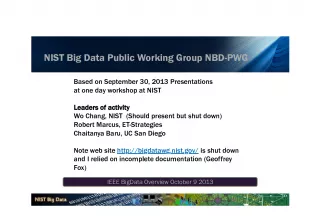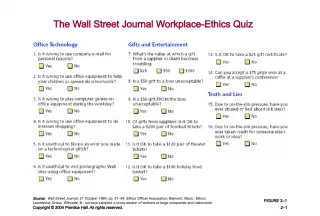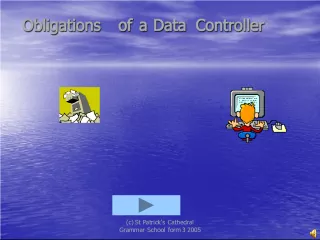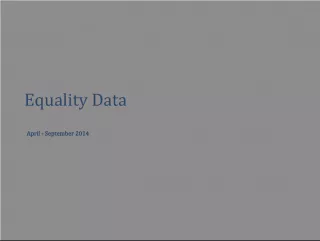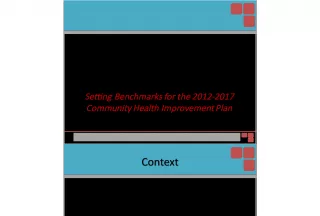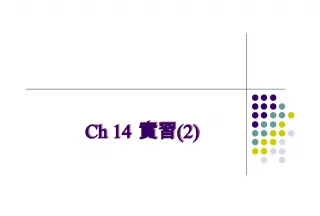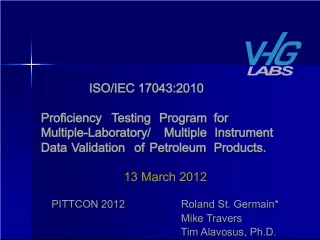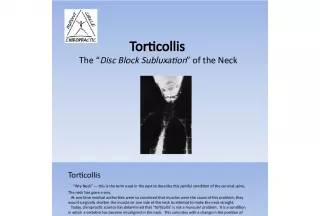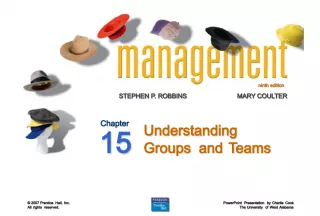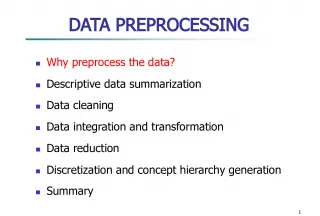Improving the Accuracy of block group data from the American Community Survey (ACS)
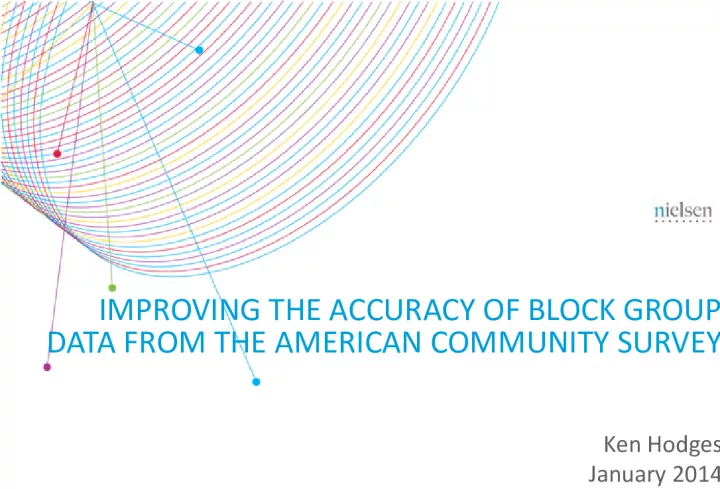

This study focuses on improving the accuracy of block group data from the American Community Survey (ACS). The ACS data has been criticized for having large margins of error and outliers, which are not released on American FactFinder. The study analyzes ACS responses from 2006-2010 and recommends improvements to ensure greater accuracy.
- Uploaded on | 0 Views
-
 kraig
kraig
About Improving the Accuracy of block group data from the American Community Survey (ACS)
PowerPoint presentation about 'Improving the Accuracy of block group data from the American Community Survey (ACS)'. This presentation describes the topic on This study focuses on improving the accuracy of block group data from the American Community Survey (ACS). The ACS data has been criticized for having large margins of error and outliers, which are not released on American FactFinder. The study analyzes ACS responses from 2006-2010 and recommends improvements to ensure greater accuracy.. The key topics included in this slideshow are ACS data, block groups, accuracy, margins of error, outliers,. Download this presentation absolutely free.
Presentation Transcript
1. Ken Hodges January 2014 IMPROVING THE ACCURACY OF BLOCK GROUP DATA FROM THE AMERICAN COMMUNITY SURVEY
2. Copyright 2013 The Nielsen Company. Confidential and proprietary. 2 BACKGROUND ACS data for block groups Concern over accuracy Large margins of error Conspicuous outliers Census Bureau does not release on American FactFinder Only on ACS Summary File ACS sample Smaller than census long form Many estimates based on few responses
3. Copyright 2013 The Nielsen Company. Confidential and proprietary. 3 BACKGROUND Block Groups by Number of ACS Responses (2006-2010) ACS Responses N Percent Missing 380 0.2 Less than 10 2,650 1.2 10 to 19 18,264 8.4 20 to 49 132,669 60.9 50 to 99 53,315 24.5 100 to 199 9,555 4.4 200 to 499 896 0.4 500 or more 11 0.0 Total 217,740 100.0
4. Copyright 2013 The Nielsen Company. Confidential and proprietary. 4 BACKGROUND Accuracy much better for aggregations But some d ismiss value of block group data Critical of availability More productive to seek improvements Paper describes: ACS Touch Method Effort to improve accuracy Before use in Nielsen products Also evaluation against 2010 census data
5. Copyright 2013 The Nielsen Company. Confidential and proprietary. 5 ACS TOUCH METHOD Effort to improve accuracy of ACS block group data Augment with data from adjacent block groups Expectation: adjacent BGs tend to be similar A form of borrowing strength Similar to census allocation and substitution Requires mega data processing But conceptually and computationally simple
6. Copyright 2013 The Nielsen Company. Confidential and proprietary. 6 ACS TOUCH METHOD
7. Copyright 2013 The Nielsen Company. Confidential and proprietary. 7 ACS TOUCH METHOD
8. Copyright 2013 The Nielsen Company. Confidential and proprietary. 8 ACS TOUCH METHOD For each ACS table and each block group Three distributions ACS Published : Data as published in ACS Summary File ACS Touch : Published combined with adjacent BGs ACS Weighted : Weighted avg of Published and Touch Weight based on Number of ACS responses If 100+ responses, Published weighted 100 pct Touch weight increased as responses decrease
9. Copyright 2013 The Nielsen Company. Confidential and proprietary. 9 2006-2010 ACS PERCENT DISTRIBUTION OF HOUSEHOLD TYPE BY HOUSEHOLD SIZE: BG 16 001 0004.00 1 IN IDAHO HH Type and Size ACS Published ACS Touch ACS Weighted Total Households 328 4,082 328 Family 2 persons 36.9 20.1 23.3 Family 3 persons 8.5 9.8 9.6 Family 4 persons 21.3 12.5 14.2 Family 5 persons 3.7 3.1 3.2 Family 6 persons 0.0 1.9 1.6 Family 7+ persons 0.0 0.0 0.0 Nonfamily 1 person 3.4 39.7 32.8 Nonfamily 2 persons 4.0 8.9 7.9 Nonfamily 3 persons 0.0 2.2 1.7 Nonfamily 4 persons 0.0 0.0 0.0 Nonfamily 5 persons 0.0 0.0 0.0 Nonfamily 6 persons 0.0 0.0 0.0 Nonfamily 7+ persons 22.3 1.8 5.7 Unweighted HU 19
10. Copyright 2013 The Nielsen Company. Confidential and proprietary. 10 EVALUATION Key question Does this approach make data more (or less) accurate? Evaluation Looked at Households by Type and Size Available for both ACS and census Compared all 3 ACS distributions vs. census 2006-2010 data for all BGs Index of dissimilarity An imperfect but revealing comparison
11. Copyright 2013 The Nielsen Company. Confidential and proprietary. 11 2006-2010 ACS PERCENT DISTRIBUTION OF HOUSEHOLD TYPE BY HOUSEHOLD SIZE: BG 16 001 0004.00 1 IN IDAHO HH Type and Size 2010 Census ACS Published ACS Touch ACS Weighted Total Households 376 328 4,082 328 Family 2 persons 22.3 36.9 20.1 23.3 Family 3 persons 17.6 8.5 9.8 9.6 Family 4 persons 7.7 21.3 12.5 14.2 Family 5 persons 5.1 3.7 3.1 3.2 Family 6 persons 1.9 0.0 1.9 1.6 Family 7+ persons 0.5 0.0 0.0 0.0 Nonfamily 1 person 32.2 3.4 39.7 32.8 Nonfamily 2 persons 11.4 4.0 8.9 7.9 Nonfamily 3 persons 1.1 0.0 2.2 1.7 Nonfamily 4 persons 0.3 0.0 0.0 0.0 Nonfamily 5 persons 0.0 0.0 0.0 0.0 Nonfamily 6 persons 0.0 0.0 0.0 0.0 Nonfamily 7+ persons 0.0 22.3 1.8 5.7 Index of Dissimilarity 50.4 15.2 14.4
12. Copyright 2013 The Nielsen Company. Confidential and proprietary. 12 EVALUATION OK . . . the big outlier is improved What about across all block groups? Mean Index of Dissimilarity for All Block Groups: Alternative ACS Distributions versus 2010 Census Does this differ by N of ACS responses? ACS Comparison Mean IOD ACS Published vs. Census 19.4 ACS Touch vs. Census 12.2 ACS Weighted vs. Census 12.2
13. Copyright 2013 The Nielsen Company. Confidential and proprietary. 13 MEAN INDEX OF DISSIMILARITY FOR BLOCK GROUP ACS DISTRIBUTIONS OF HOUSEHOLD TYPE BY SIZE BY NUMBER OF ACS RESPONSES ACS Responses N Published Touch Weighted All Block Groups* 216,598 19.4 12.2 12.2 Fewer than 10 1,900 60.3 32.4 32.1 10 to 19 18,255 29.3 15.0 14.8 20 to 29 50,291 23.2 13.1 13.0 30 to 39 48,379 19.4 12.1 12.0 40 to 49 33,996 16.9 11.5 11.4 50 to 59 22,114 15.3 11.1 11.0 60 to 69 13,884 14.2 10.7 10.9 70 to 79 8,512 13.4 10.4 11.1 80 to 89 5,314 12.7 10.2 11.3 90 to 99 3,491 12.2 10.0 11.7 100 or more 10,462 10.8 9.2 10.8 * Block groups with 2010 households greater than 0.
14. Copyright 2013 The Nielsen Company. Confidential and proprietary. 14 EVALUATION Touch better than Published even where larger N of ACS responses Better to use ACS Touch for all BGs? Another view How often do Touch and Weighted improve over Published?
15. Copyright 2013 The Nielsen Company. Confidential and proprietary. 15 PERCENT OF BLOCK GROUPS WHERE ACS TOUCH AND WEIGHTED HAD LOWER MEAN INDEX OF DISSIMILARITY THAN ACS PUBLISHED: HOUSEHOLD TYPE AND SIZE BY NUMBER OF ACS RESPONSES ACS Responses N Touch Weighted All Block Groups* 216,598 82.5 88.4 Fewer than 10 1,900 91.2 92.1 10 to 19 18,255 92.9 95.3 20 to 29 50,291 89.4 94.0 30 to 39 48,379 85.2 92.8 40 to 49 33,996 80.5 91.8 50 to 59 22,114 77.3 91.3 60 to 69 13,884 74.2 91.6 70 to 79 8,512 72.0 92.4 80 to 89 5,314 70.4 93.5 90 to 99 3,491 68.2 93.0 100 or more 10,462 65.4 0.0 * Block groups with 2010 households greater than 0.
16. Copyright 2013 The Nielsen Company. Confidential and proprietary. 16 EVALUATION OK . . . improvement across BGs But is there a negative impact at aggregate levels? Mean Index of Dissimilarity for ACS Distributions: Block Groups Summed to County and National Levels Conclusion: No major negative impact on aggregate areas ACS Comparison County National ACS Published vs. Census 4.8 2.0 ACS Touch vs. Census 4.6 1.8 ACS Weighted vs. Census 4.7 2.1
17. Copyright 2013 The Nielsen Company. Confidential and proprietary. 17 CONCLUSIONS Comprehensive test not feasible ACS is only source for most data it provides ACS period estimates not comparable with census Limited evaluation suggests potential ACS outliers improved Mean IODs are reduced Improved accuracy in most BGs Accuracy of aggregations preserved
18. Copyright 2013 The Nielsen Company. Confidential and proprietary. 18 CONCLUSIONS Could debate merits of Touch vs. Weighted But the potential for improvement is clear And the application could be refined More selective designation of touch BGs Those similar on decennial characteristics The choice is ours . . . Dismiss BG data as error-prone Or seek to reduce error, and maximize value
19. Thank You ! Ken.hodges@nielsen.com
